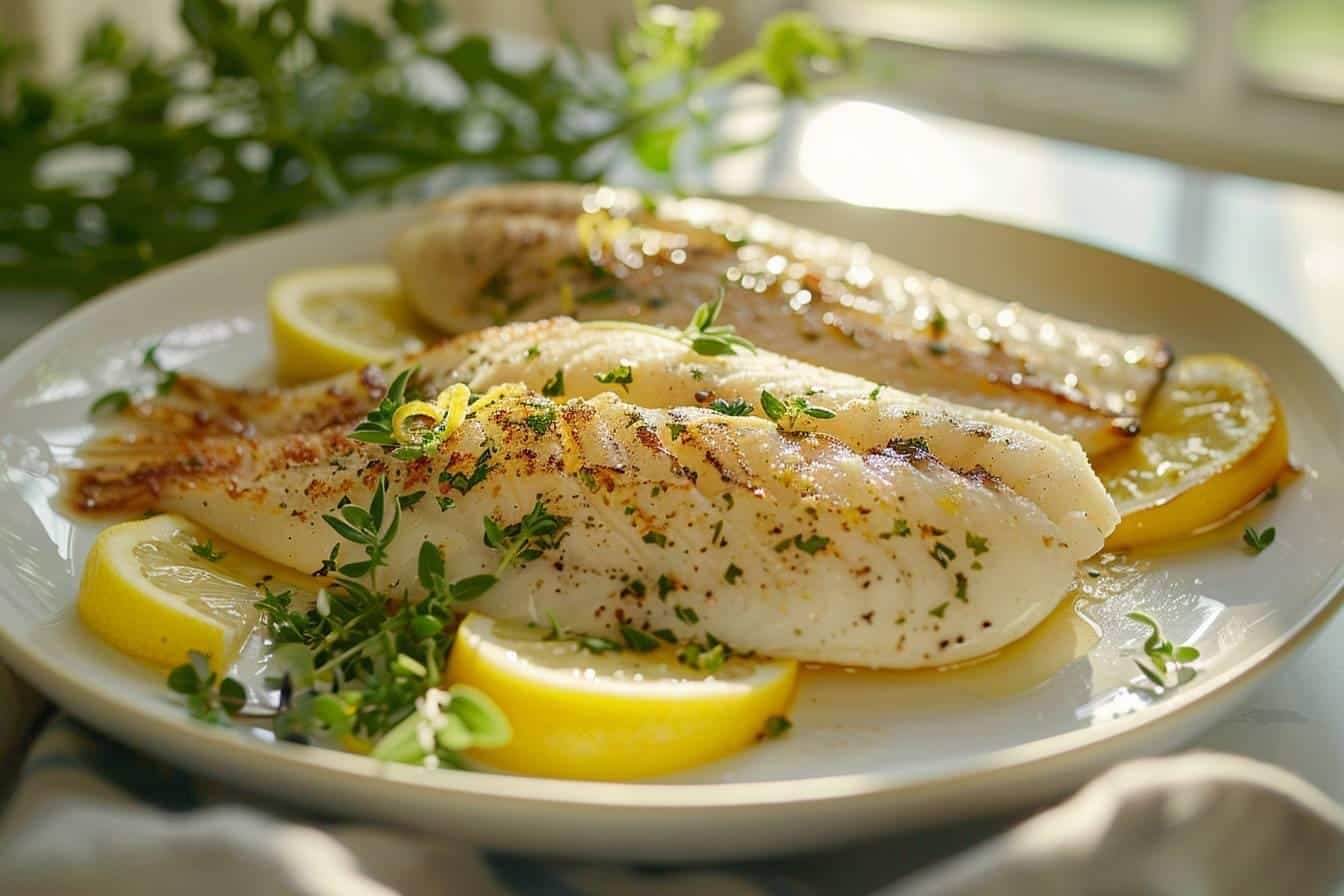The article in brief
Monkfish, a lean fish with a host of nutritional benefits, deserves a special place in our diet. Here's what you need to know:
- Low fat content only 1% of fat per 100g
- Rich in protein 20.6g of high-quality protein per 100g
- Source of B vitamins and essential minerals such as selenium and iodine
- Responsible consumption recommended as it is an endangered species
- Alternate with oily fish for a balanced diet
Ah, monkfish! That delicately flavoured fish that I've often recommended to customers in my fish counter. Are you wondering whether monkfish is a fatty or lean fish? Let me tell you about its nutritional characteristics. As a keen aquarist since I was 20, I've got to know the different species of fish inside out. Let's dive into the secrets of this delicious inhabitant of the seas together!
Monkfish: a lean fish with many benefits
Let's start by answering the question on everyone's lips: monkfish is a lean fish. With just 1% of fat, it falls into the low-fat fish category. To give you a better idea, here is the nutritional composition of monkfish per 100g:
- Protein: 20.6g
- Fat: 1.27g
- Water: 59.61g
- Calories: 93.8 kcal
These figures speak for themselves! Monkfish is an excellent source of high-quality protein, while being low in fat. It's a bit as if Mother Nature had created a fish specially for athletes and figure-conscious people!
A cocktail of vitamins and minerals
But that's not all! Monkfish is also a goldmine in terms of micronutrients. It's packed with B vitamins, particularly B12 and B3. These vitamins play a crucial role in the proper functioning of our nervous system and our energy metabolism. I've always been fascinated by the way nature concentrates so many benefits in a single food!
Essential minerals for our bodies
As well as vitamins, monkfish offers us a cocktail of minerals and trace elements that are essential to our health. It contains selenium, potassium, phosphorus and iodine. These elements are involved in a number of vital bodily functions, such as boosting our immune system and regulating blood pressure.
Oily and lean fish: a beneficial alternation
Now that we know that monkfish is a lean fish, it's important to understand why it's advisable to alternate between fatty and lean fish in our diet. Nutritionists recommend eating fish twice a week, varying the species. This recommendation didn't come out of the blue, believe me!
The benefits of oily fish
Oily fish, such as salmon, sardines and mackerel, are rich in omega-3. These essential fatty acids are real allies for our cardiovascular and cerebral health. I remember one of my customers telling me how the regular introduction of oily fish into her diet had improved her concentration at work. Fascinating, isn't it?
Nutritional balance with lean fish
Lean fish, such as our beloved monkfish, cod or sole, are the perfect complement to this intake. They provide us with quality protein without overloading our bodies with fat. It's a bit like giving your body a balanced meal, with all the nutrients it needs without excess.
| Type of fish | Examples | Lipid content |
|---|---|---|
| Lean fish | Monkfish, cod, whiting, sole | < 2% |
| Oily fish | Salmon, sardines, mackerel, herring | > 2% |

Responsible consumption of monkfish
Although monkfish is delicious and nutritious, it's essential to eat it responsibly. As someone who is passionate about the oceans, I can't talk to you about this fish without mentioning the ecological issues surrounding it.
A species to be consumed in moderation
Unfortunately, the monkfish is on the red list of threatened species. This situation breaks my heart, but it reminds us of the importance of diversifying our fish consumption. An adult portion of monkfish corresponds to around 100g, which is more than enough to enjoy its nutritional benefits.
Seasonality and alternatives
To preserve this species, it is best to eat monkfish from September to May, avoiding the summer period. If you're a fan of this fish, why not explore other equally tasty options? Saithe or hake are excellent alternatives that will allow you to vary the pleasures while preserving marine biodiversity.
Ultimately, the monkfish, lean fishis an excellent choice for a balanced diet. Rich in protein and low in fat, it fits perfectly into a varied diet that alternates fatty and lean fish. Let's not forget that the health of our oceans is just as important as our own. By eating responsibly and varying the species we eat, we can enjoy the nutritional benefits of fish while preserving the richness of our seas.
External sources :
